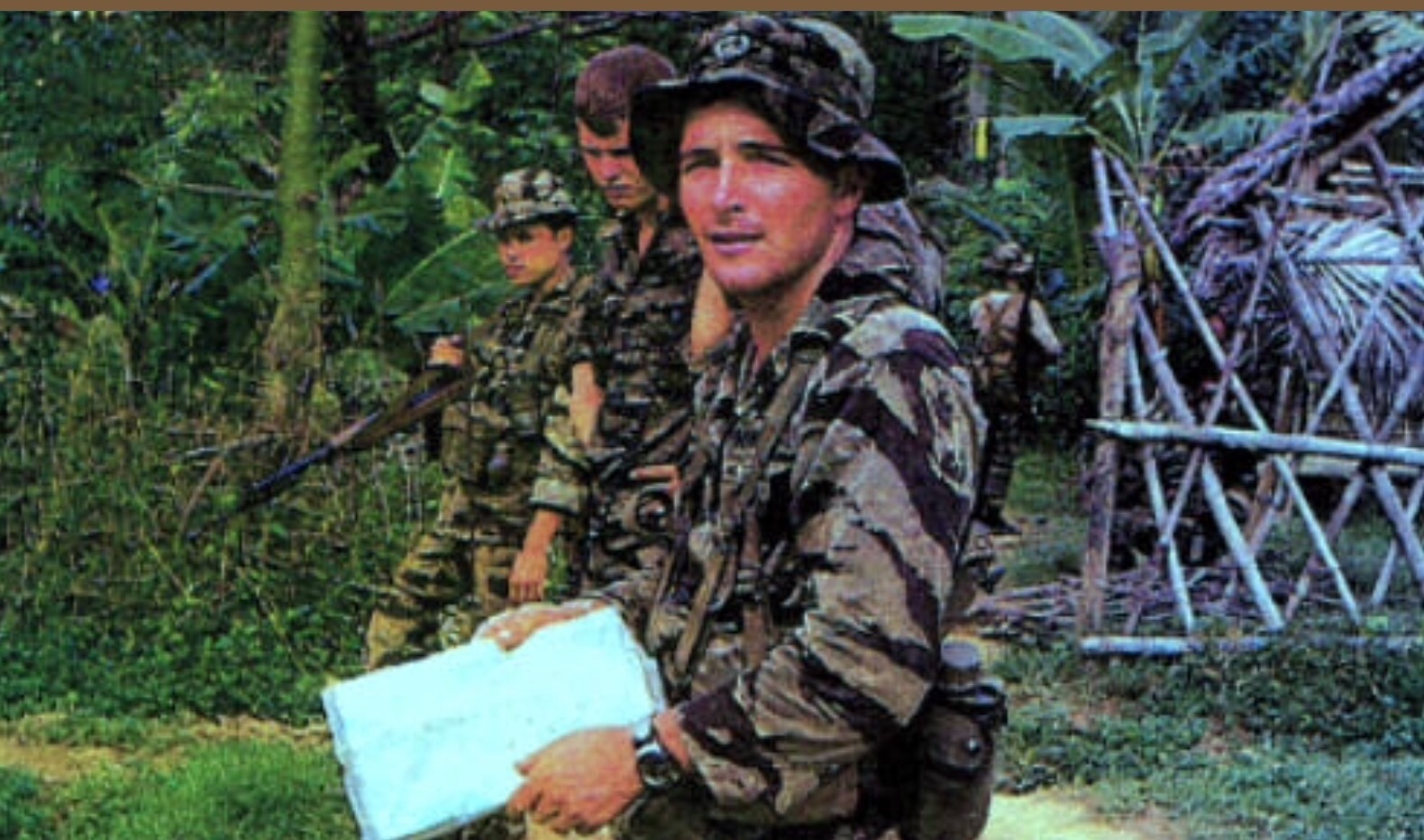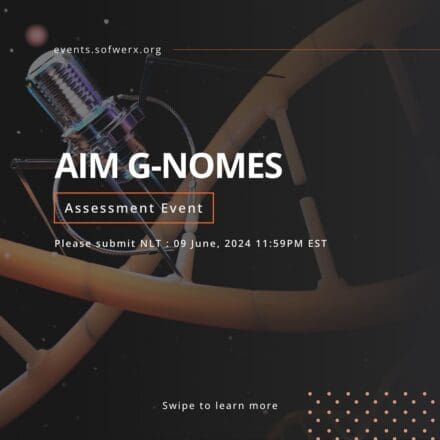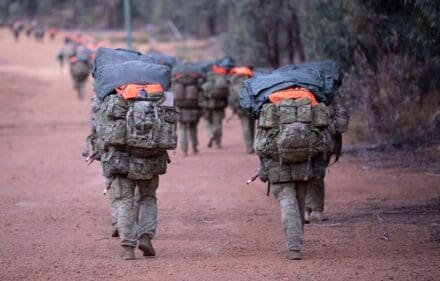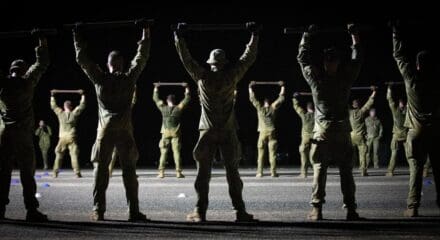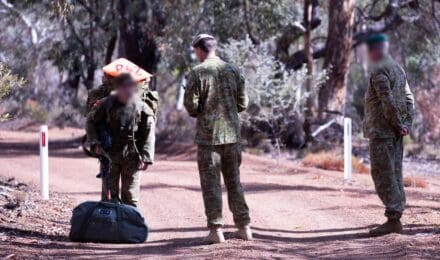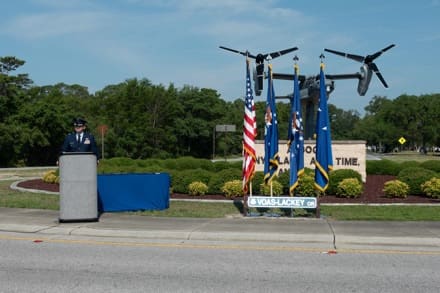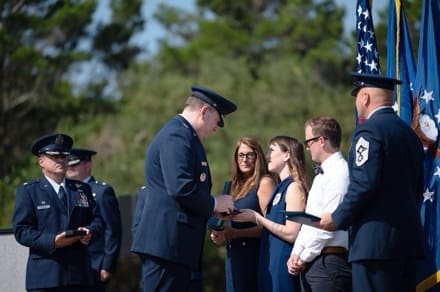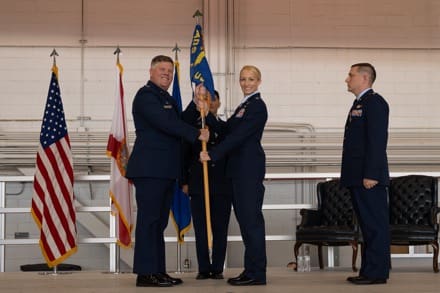HURLBURT FIELD, Fla. —
On March 4-6, the Air Force Special Operations Command Women’s Initiatives Team hosted the third annual DAGGER ATHENA, named DA24, and outbrief the AFSOC commander and senior leaders.
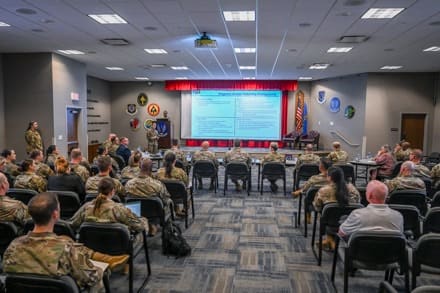
Each year the WIT hosts an action event, known as DAGGER ATHENA, as a concentrated, rapid-action effort to solicit grassroots-identified barriers and propose actionable solutions by Air Commando from across the AFSOC enterprise.
DA24 kicked off with a leadership development event and barrier analysis workshop where the team of volunteers developed lines of effort based on the readiness barriers identified from across the AFSOC enterprise. The team consisted of Total Force Air Commandos from every AFSOC base, including guard, reserve, civilians, and spouses. Once LOEs were established, actionable solutions were developed.
Participants presented four LOEs they identified optimize Air Commando readiness as they continue to be force-multipliers to the joint force: pregnant Airman voluntary deployments, post-partum specialized case manager, cold weather gear and Self-Contained Breathing Apparatus (SCBA), and bladder relief and fitment issues for tactical vests. Fitment is gear or equipment purpose-built for a specific task or mission.
Some of the solutions, like obtaining a waiver to use the identified bladder relief device on all AFSOC aircraft, have been implemented because of the access to the proper approval authority on staff, while others require additional development.
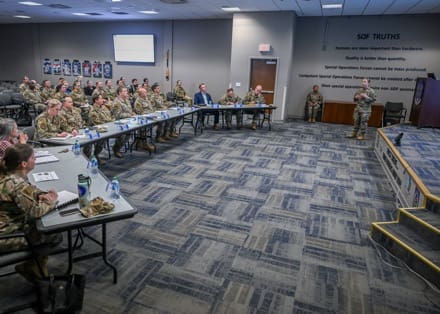
“Each initiative briefed to the AFSOC commander focused on improving the readiness and lethality of our Airmen and we hope that by pathfinding solutions within AFSOC, we can share these best practices with our sister MAJCOMs to bring change to the entire Air Force,” said Master Sgt. Klarissa Mendonza, DA24 Senior Enlisted Leader.
Following the outbrief, U.S. Air Force Lt. Gen. Tony Bauernfeind, AFSOC commander, expressed his gratitude stating the briefers were exceptional across the board.
“DAGGER ATHENA is all about maximizing readiness,” he said. “We’ve got to knock these barriers down. As Air Commandos, we don’t have the luxury to not be ready as more is being asked of us.”
This year’s iteration of DAGGER ATHENA brought the proposed solutions into the AFSOC staffing process to ensure integration and normalizing the process of addressing identified barriers, ensuring success and longevity past DA24.
“These are not simply DAGGER ATHENA initiatives,” said Maj. Gen. Rebecca Sonkiss, AFSOC deputy commander. “We are normalizing these efforts into the staff process to deliver a more lethal, capable force and normalize taking care of Air Commandos. These are not women’s issues. These are Airmen’s issues. These are leadership issues.”
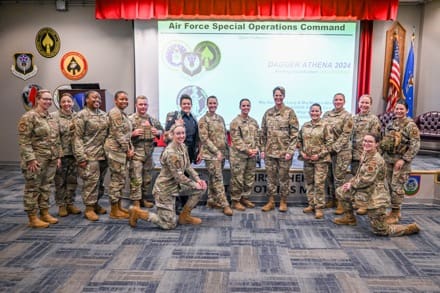
Speaking at the outbrief, DA24 co-lead, Maj. Samantha Lang said, “The AFSOC WIT and DAGGER ATHENA event began three years ago. Today we continue to march our efforts forward and have begun to normalize our integration with the AFSOC staff to continue barrier identification and ensure we maintain coordination through the staff process to sustain momentum, accountability and ultimately bolster Air Commando readiness and increase lethality.”
The AFSOC WIT is led by co-leads Lt. Col. Meghan O’Rourke and Maj. Kate Hewlett, Senior Enlisted Leader, Senior Master Sergeant Nicolette Newton, and Spouse Lead, Ms. Jenni Kain. DA24 was led by co-leads Maj. Monica Abongan, Maj. Samantha Lang and Master Sgt. Klarissa Mendonza.
The AFSOC WIT is a volunteer-based Barrier Analysis Working Group with Maj. Gen. Rebecca Sonkiss, serving as senior champion. The mission of the AFSOC WIT is to increase operational readiness, retention, and recruitment; reduce risk to force and risk to mission; and optimize resources.
Courtesy of Air Force Special Operations Command
